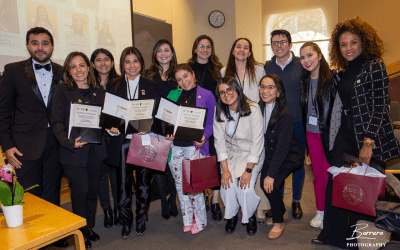
About the Author
Gonzalo Montoya is a Fulbright Fellow and a second-year student of the Master of Architecture in Urban Design at the Harvard Graduate School of Design (GSD). Additionally, he holds a bachelor’s degree in architecture from the National University of Rosario (UNR) where he also is a University Teacher, and a post-graduate degree in Landscape Architecture from the Torcuato Di Tella University (UTDT) of Buenos Aires. . gonzalomontoya@gsd.harvard.edu
Sobre el Autor
Gonzalo Montoya es becario Fulbright y estudiante de segundo año de la Maestría en Arquitectura en Diseño Urbano en la Harvard Graduate School of Design (GSD). Además, es arquitecto por la Universidad Nacional de Rosario (UNR) donde también es Docente Universitario de grado, también posee estudios de posgrado en Arquitectura del Paisaje por la Universidad Torcuato Di Tella (UTDT) de Buenos Aires. gonzalomontoya@gsd.harvard.edu
Green Infrastructure
Tlaloc’s Ally in Mexico City
The relationship between Mexicans and water, spanning from their pre-Hispanic history to the present metropolitan era, has profoundly shaped Mexico City’s development. In my two-month sojourn there with the Office of Urban Resilience (ORU) through the DRCLAS Summer Internship Program, I came to understand the city’s intrinsic connection to this vital natural resource: from abundance to scarcity, from being a lacustrine settlement to a bustling megacity facing severe water stress. Throughout my days working at ORU, an office lead by Adriana Chávez, Elena Tuleda and Víctor Rico that takes on the beautiful and challenging task of “Shaping the future and well-being of Earth’s people and ecosystems,“ I have discovered that the answers to these questions are emerging.
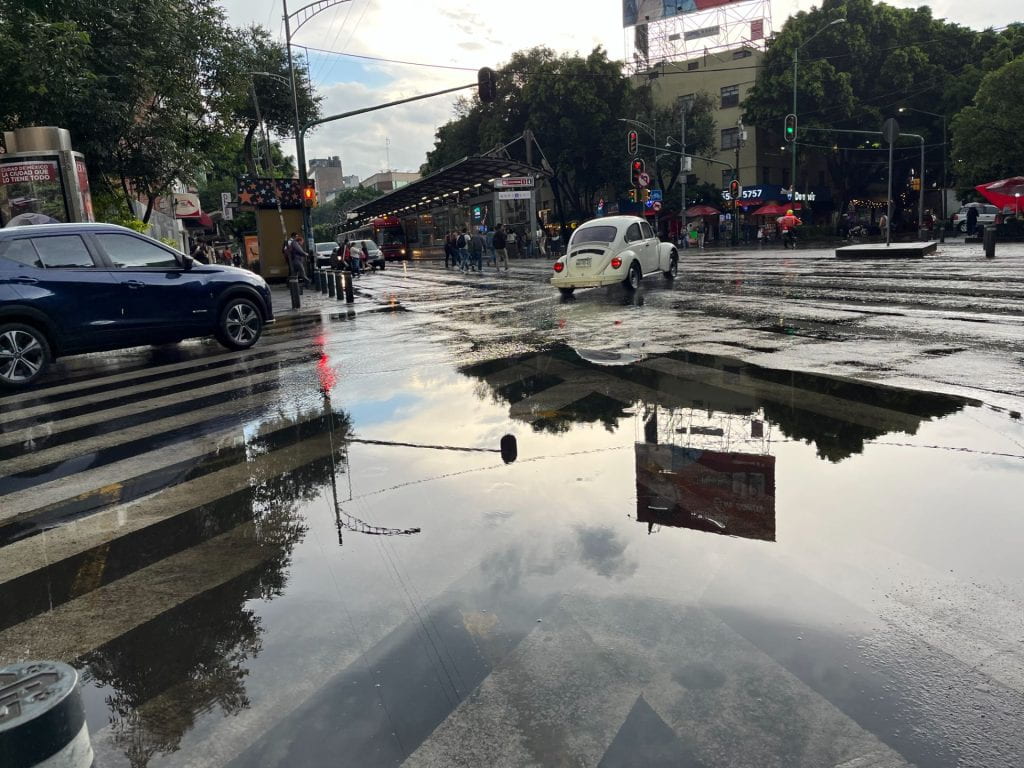
How has their Mesoamerican past influenced the way Mexicans apply natural instruments that align with the forces, often uncontrolled, of the God Tlaloc?Historically, Mesoamerican culture was deeply influenced by the concept of duality, which involved dividing the cosmos into complementary opposites. Day and night, light and darkness, the earthly realm and the underworld, among others, were all integral parts of this worldview. Such was the importance of maintaining harmony in the relationship of these opposites that, according to the National Institute of Anthropology and History, the entire world depended on the existence of both elements and their balance. Furthermore, the dominance of one over the other would disturb the order and potentially lead to the end of the world.
The Mexica culture represented water resources through the God Tlaloc, the deity of rain who possessed the power to control water and bestow fertility upon the land. Tlaloc played an essential role in the sociocultural development of the Aztecs, influencing their work and, most importantly, their diet.
I learned that the Valley of Mexico has fascinating origins as it was established on a basin of lakes. The ancient inhabitants of the region invented a strategic system called chinampas to gently modify the vast lakes of Zumpango, Texcoco, Xochimilco, Tláhuac and Chalco. This adaptation exemplifies the resourcefulness and ingenuity of the ancient civilizations that thrived in the Valley of Mexico. By harnessing the potential of the chinampas system, they not only ensured a sustainable food source, through increased agricultural productivity, but also significantly influenced the physical and cultural landscape of the region.
The construction of intricate canal systems was a pivotal aspect of their achievements. These canals played a crucial role in effectively managing river flooding, mitigating the risk of inundation during the rainy season. By skillfully controlling water flow, the ancient civilizations demonstrated their adeptness in harmonizing with the natural environment, enabling the development and growth of their settlements on the fertile lands of the valley.
The chinampas reflected their ingenuity and their understanding that occupying only the necessary space was crucial to maintaining a harmonious coexistence. By limiting the expansion of this system to their essential needs, the early Aztec settlers demonstrated their reverence for the environment, or Tlaloc in this case, and their recognition of its intrinsic value, allowing them to thrive while preserving the delicate balance of the surrounding ecosystem.
Following the arrival of the Spanish, the once-unique water-centric identity of the city gradually transformed into a drier landscape, resulting in the deterioration of the natural relationship with Tlaloc and the ecosystem. Regrettably, this trend persists to the present day, marking a departure from the city’s historical connection to its water heritage and signaling the ongoing degradation of its natural water systems.
Today, despite 98% of the population in Mexico City having access to water, the soaring demand has put immense pressure on underground aquifers. The extraction rates, surpassing double their sustainable capacity, have resulted in caving of the land and the water system’s vulnerability. Additionally, the great impermeabilization of the soil due to urbanization processes, for example asphalt, means that only 14% of the water that falls on Mexico City is absorbed by the soil and reaches the aquifers.
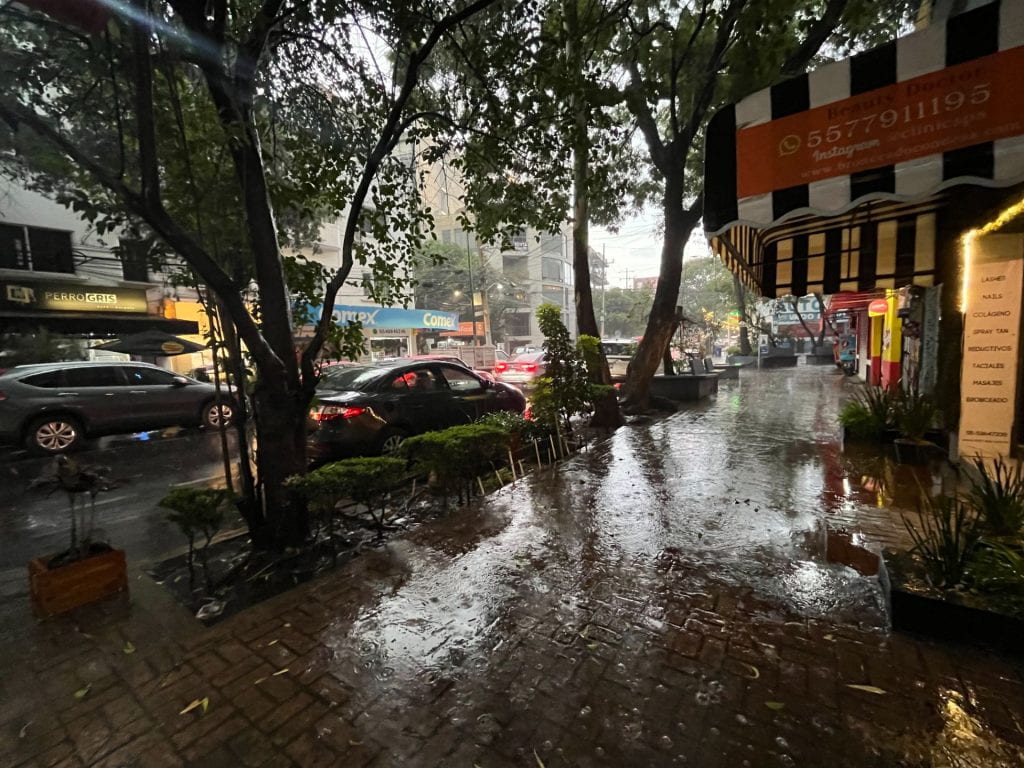
During the summer season, powerful and recurrent rains serve as a reminder to the inhabitants of Mexico City that nature still reigns over the Aztec territory. In a matter of seconds, the rainwater drainage system becomes overwhelmed, and the city faces the possibility of reverting to its ancient state: a vast lake.
The impact of the water on the impermeable pavement varies depending on the neighborhood, with some experiencing more severe consequences. As the following morning dawns, urban micro-lagoons begin to form, requiring urban cleaning personnel to diligently remove the water to restore dry and habitable land, paying homage to their ancestors.
How can Mexico City establish resilience and forge alliances to mitigate the formidable, thus far uncontrollable, force of Tlaloc? How can the Mexican inhabitants reconstruct their healthy pre-Hispanic ancestral ties with the natural systems that reign in this area?
Honoring the pre-Hispanic culture, the chosen approach incorporates cutting-edge technology that examines natural systems and integrates them into the urban system. As one traverses Mexico City, it becomes evident that certain neighborhoods, such as Roma, Condesa or Polanco, have begun to adapt and integrate green infrastructure into their urban design. In areas where swales, rain gardens or permeable asphalts predominate, the impact of Tlaloc’s water fury is considerably mitigated.

Green infrastructure acts as a cushion, absorbing and retaining the torrents of water that descend in fleeting bursts, enabling natural drainage into the earth or underground storm systems. Also, incorporating natural systems into the urban environment yields ecological benefits, offering new habitats for plant species and pollinating insects.
Once again, and true to their Mesoamerican past, Mexicans are implementing nature-based technological tools to restore the harmonious relationships that the Aztecs originally used to have with Tlaloc. These actions are further testimony to their millennial relationship with natural resources, which, in addition to putting them in a creative position, shows the power of a society that understands its role as an ally of the gods, helping to maintain this supposedly opposed urban-natural duality, as harmonious and complementary as possible.
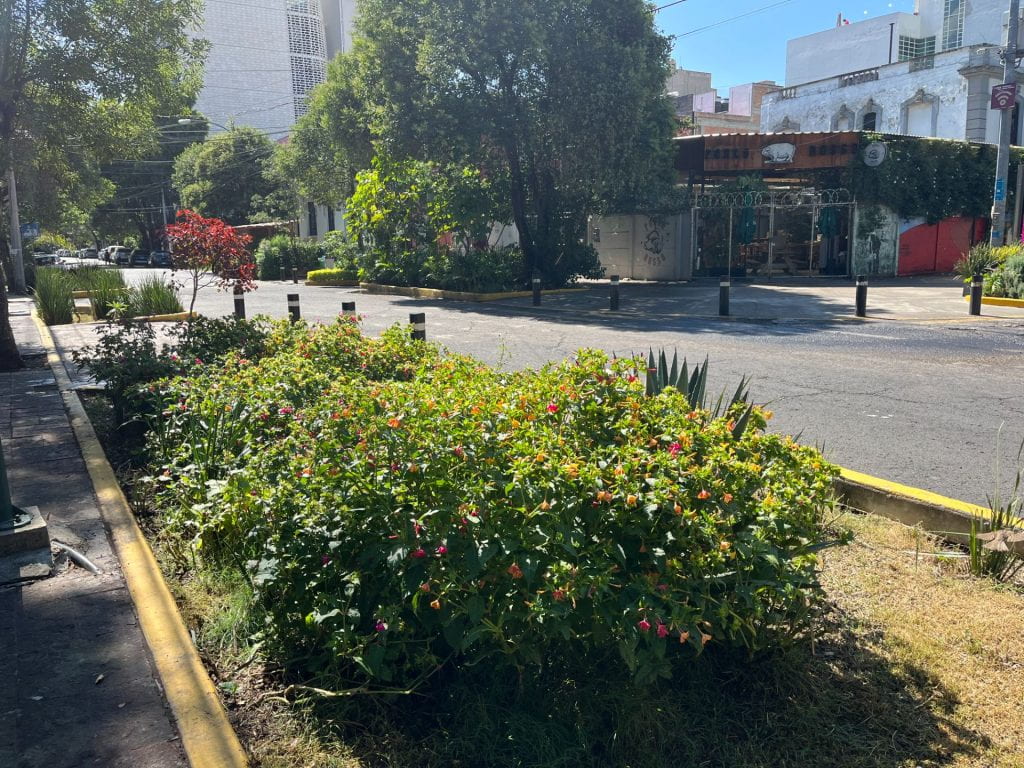
Infraestructura Verde
El aliado de Tlaloc en la Ciudad de México
Por Gonzalo Montoya
La relación entre los mexicanos y el agua, que abarca desde su historia prehispánica hasta la actual era metropolitana, ha moldeado profundamente el desarrollo de la Ciudad de México. En mi estancia de dos meses allí a través del Programa de Pasantías de Verano DRCLAS, llegué a comprender la conexión intrínseca de la ciudad con este recurso natural vital: de la abundancia a la escasez, de ser un asentamiento lacustre a un bullicioso megaciudad que enfrenta un grave estrés hídrico. A lo largo de mis días trabajando en la Oficina de Resiliencia Urbana (ORU), una oficina dirigida por Adriana Chávez, Elena Tuleda y Víctor Rico que asume la hermosa y desafiante tarea de “Dar forma al futuro y el bienestar de las personas y los ecosistemas de la Tierra”, he descubierto que las respuestas a estas preguntas están surgiendo.
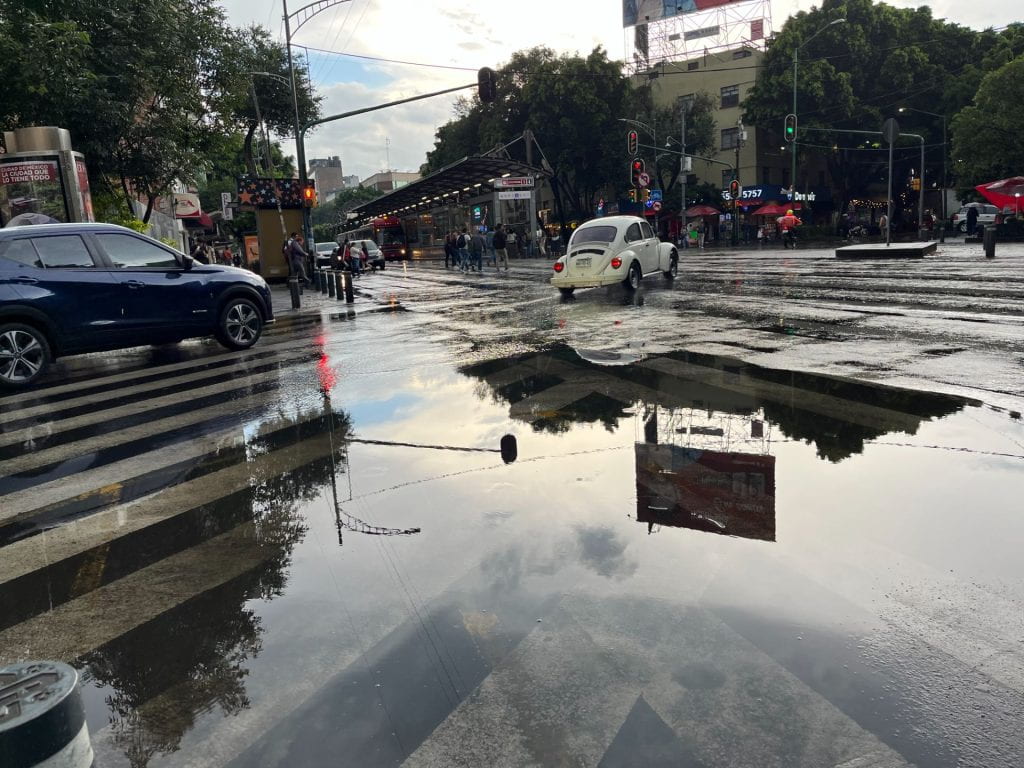
¿Cómo ha influido su pasado mesoamericano en la forma en que los mexicanos aplican instrumentos naturales que se alinean con las fuerzas, a menudo incontroladas, del dios Tláloc? Históricamente, la cultura mesoamericana estuvo profundamente influenciada por el concepto de dualidad, que implicaba dividir el cosmos en opuestos complementarios. El día y la noche, la luz y la oscuridad, el reino terrenal y el inframundo, entre otros, eran partes integrales de esta cosmovisión. Tal era la importancia de mantener la armonía en la relación de estos opuestos que, según el Instituto Nacional de Antropología e Historia, el mundo entero dependía de la existencia de ambos elementos y de su equilibrio. Además, el dominio de uno sobre el otro perturbaría el orden y conduciría potencialmente al fin del mundo.
La cultura mexica representaba los recursos hídricos a través del dios Tláloc, la deidad de la lluvia que poseía el poder de controlar el agua y otorgar fertilidad a la tierra. Tláloc jugó un papel esencial en el desarrollo sociocultural de los aztecas, influyendo en su trabajo y, lo más importante, en su dieta.
Aprendí que el Valle de México tiene orígenes fascinantes ya que se estableció sobre una cuenca de lagos. Los antiguos habitantes de la región inventaron un sistema estratégico llamado chinampas para modificar paulatinamente los vastos lagos de Zumpango, Texcoco, Xochimilco, Tláhuac y Chalco. Esta adaptación ejemplifica el ingenio de las antiguas civilizaciones que prosperaron en el Valle de México. Al aprovechar el potencial del sistema de chinampas, no sólo aseguraron una fuente sostenible de alimentos, a través de una mayor productividad agrícola, sino que también influyeron significativamente en el paisaje físico y cultural de la región.
La construcción de intrincados sistemas de canales fue un aspecto fundamental de sus logros. Estos canales desempeñaron un papel crucial en la gestión eficaz de las inundaciones de los ríos, mitigando el riesgo de inundaciones durante la temporada de lluvias. Al controlar hábilmente el flujo de agua, las civilizaciones antiguas demostraron su capacidad para armonizar con el entorno natural, permitiendo el desarrollo y crecimiento de sus asentamientos en las tierras fértiles del valle.
Las chinampas reflejaban su ingenio y su comprensión de que ocupar sólo el espacio necesario era crucial para mantener una convivencia armoniosa. Al limitar la expansión de este sistema a sus necesidades esenciales, los primeros aztecas demostraron su reverencia por el medio ambiente, o Tláloc en este caso, y su reconocimiento de su valor intrínseco, permitiéndoles prosperar preservando al mismo tiempo el delicado equilibrio del ecosistema circundante.
Tras la llegada de los españoles, la identidad de la ciudad, que alguna vez fue única y centrada en el agua, se transformó gradualmente en un paisaje más seco, lo que resultó en el deterioro de la relación natural con Tláloc y el ecosistema. Lamentablemente, esta tendencia persiste hasta el día de hoy, lo que marca un alejamiento de la conexión histórica de la ciudad con su patrimonio hídrico y señala la degradación continua de sus sistemas hídricos naturales.
Hoy en día, a pesar de que el 98% de la población de la Ciudad de México tiene acceso al agua, la creciente demanda ha ejercido una inmensa presión sobre los acuíferos subterráneos. Las tasas de extracción, que superan el doble de su capacidad sostenible, han provocado el hundimiento del terreno y la vulnerabilidad del sistema hídrico. Además, la gran impermeabilización del suelo por procesos de urbanización, por ejemplo el aumento del asfalto, hace que sólo el 14% del agua que cae sobre la Ciudad de México sea absorbida por el suelo y retroalimente a los acuíferos.

Durante la temporada de verano, las poderosas y recurrentes lluvias sirven de recordatorio a los habitantes de la Ciudad de México de que la naturaleza aún reina en el territorio azteca. En cuestión de segundos, el sistema de drenaje de agua de lluvia se satura y la ciudad se enfrenta a la posibilidad de volver a su estado antiguo: un gran lago.
El impacto del agua sobre el pavimento impermeable varía según el barrio, existiendo algunos con consecuencias más graves. Al amanecer del día siguiente, comienzan a formarse micro lagunas urbanas, lo que requiere que el personal de limpieza urbana retire diligentemente el agua para restaurar la tierra seca y habitable, rindiendo homenaje a sus antepasados.
¿Cómo puede la Ciudad de México establecer resiliencia y forjar alianzas para mitigar la formidable, hasta ahora incontrolable, fuerza de Tláloc? ¿Cómo pueden los habitantes mexicanos reconstruir sus sanos vínculos ancestrales prehispánicos con los sistemas naturales que reinan en esta zona?
Haciendo honor a la cultura prehispánica, el enfoque elegido incorpora tecnología de punta que examina los sistemas naturales y los integra al sistema urbano. A medida que uno recorre la Ciudad de México, se hace evidente que ciertos barrios, como Roma, Condesa o Polanco, han comenzado a adaptarse e integrar infraestructura verde en su diseño urbano. En zonas donde predominan camellones verdes, jardines de lluvia o asfaltos permeables, el impacto de la furia hídrica de Tláloc se mitiga considerablemente.

La infraestructura verde actúa como un colchón, absorbiendo y reteniendo los torrentes de agua que descienden en ráfagas fugaces, permitiendo el drenaje natural hacia la tierra o hacia los sistemas de tormentas subterráneos. Además, la incorporación de sistemas naturales al entorno urbano genera beneficios ecológicos, al ofrecer nuevos hábitats para especies de plantas e insectos polinizadores.
Una vez más, y fieles a su pasado mesoamericano, los mexicanos están implementando herramientas tecnológicas basadas en la naturaleza para restaurar las relaciones armoniosas que los aztecas originalmente tenían con Tláloc. Estas acciones son un testimonio más de su relación milenaria con los recursos naturales, que, además de colocarlos en una posición creativa, muestra el poder de una sociedad que entiende su papel como aliada de los dioses, contribuyendo a mantener esta supuesta dualidad urbana-natural, lo más armoniosa y complementaria posible.

More Student Views
Colombian Women Who Empower Dreams
English + Español
The verraquera of Colombian women knows no bounds. This was the message left with me by the March 30 symposium, “Empowering Dreams: 1st symposium in honor to Colombian women at Harvard.”
A Review of Born in Blood and Fire
The fourth edition of Born in Blood and Fire is a concise yet comprehensive account of the intriguing history of Latin America and will be followed this year by a fifth edition.
Resilience of the Human Spirit: Seizing Every Moment
In the heart of Chicago, where I grew up, amidst the towering shadows of adversity, the lingering shadows of generational demons and the aroma of temptation, the key to the gateway of resilience and determination was inherited. The streets of my childhood neighborhood became, for many, prisons of poverty, plundering, crime and poor opportunity.

